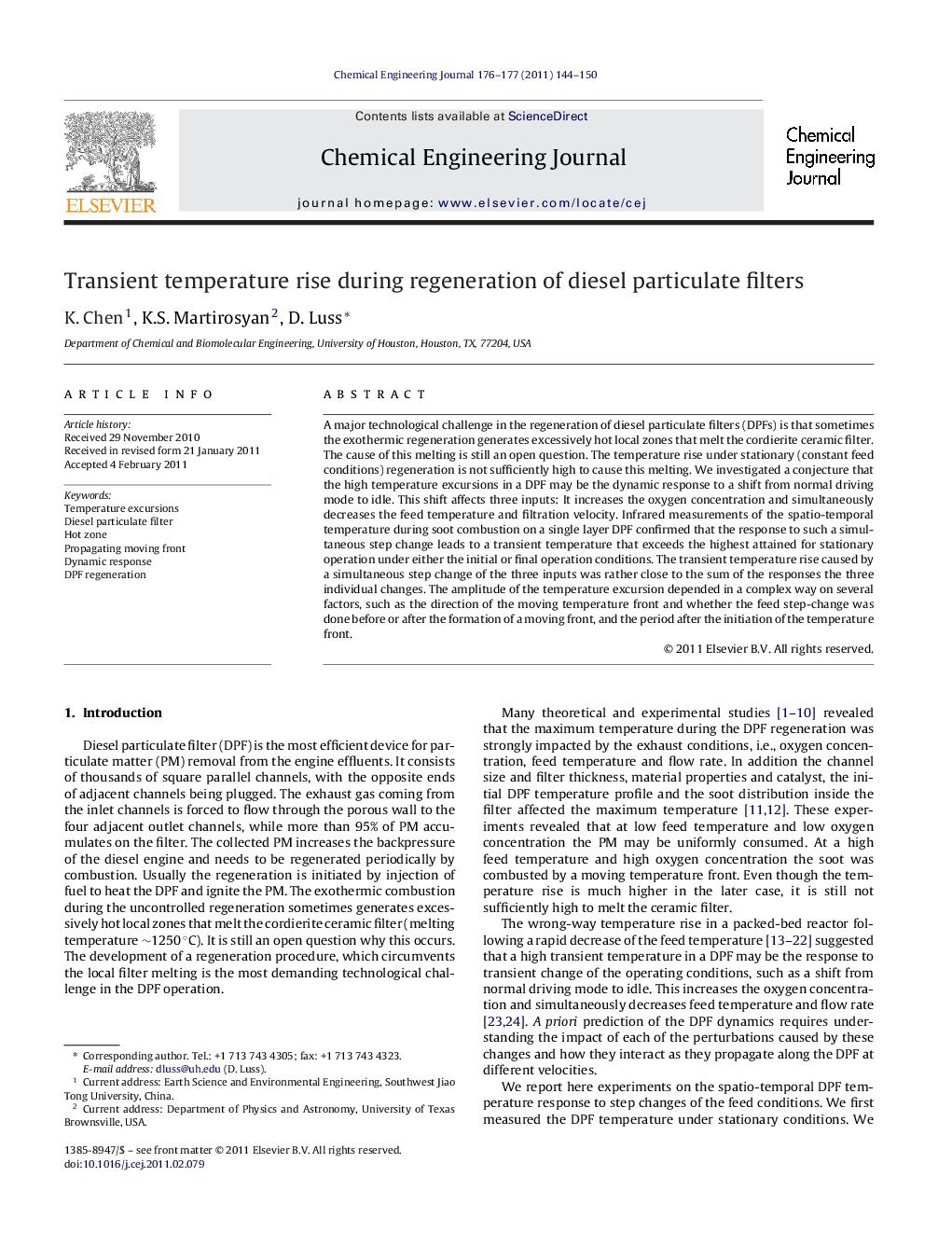| Article ID | Journal | Published Year | Pages | File Type |
|---|---|---|---|---|
| 150681 | Chemical Engineering Journal | 2011 | 7 Pages |
A major technological challenge in the regeneration of diesel particulate filters (DPFs) is that sometimes the exothermic regeneration generates excessively hot local zones that melt the cordierite ceramic filter. The cause of this melting is still an open question. The temperature rise under stationary (constant feed conditions) regeneration is not sufficiently high to cause this melting. We investigated a conjecture that the high temperature excursions in a DPF may be the dynamic response to a shift from normal driving mode to idle. This shift affects three inputs: It increases the oxygen concentration and simultaneously decreases the feed temperature and filtration velocity. Infrared measurements of the spatio-temporal temperature during soot combustion on a single layer DPF confirmed that the response to such a simultaneous step change leads to a transient temperature that exceeds the highest attained for stationary operation under either the initial or final operation conditions. The transient temperature rise caused by a simultaneous step change of the three inputs was rather close to the sum of the responses the three individual changes. The amplitude of the temperature excursion depended in a complex way on several factors, such as the direction of the moving temperature front and whether the feed step-change was done before or after the formation of a moving front, and the period after the initiation of the temperature front.
